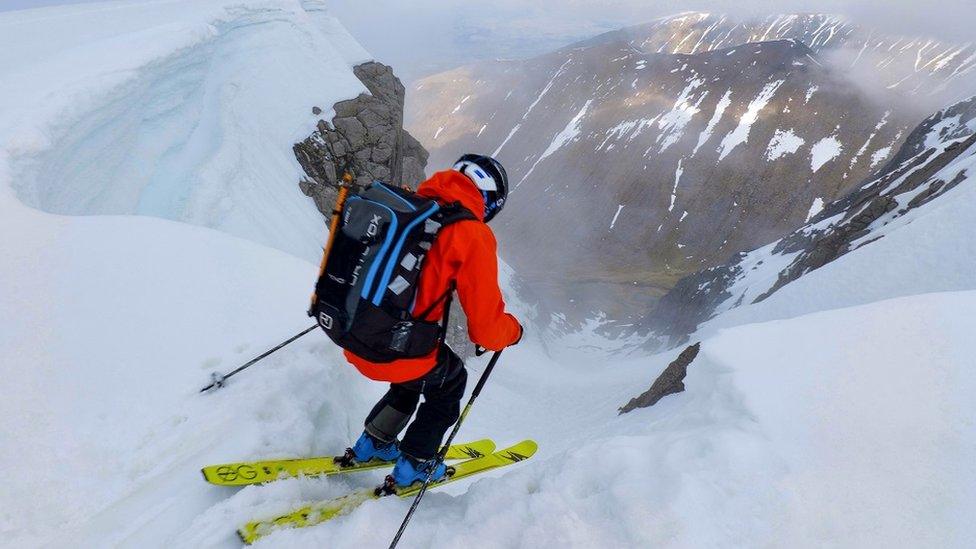Skiers encounter 'slow motion' avalanche on Ben Nevis
- Published
A skier watches the slow moving avalanche
A group of extreme skiers have had an unusual encounter with a "slow motion" avalanche in a gully on Ben Nevis.
Avalanches are usually "explosive" events involving a mass of snow sliding suddenly and rapidly down a mountainside.
The group was on Ben Nevis' north face on Saturday to ski its steep descents.
They were surprised to find the avalanche moving slowly down Observatory Gully from the summit of Britain's highest mountain.
Al Todd, who was part of the group, said late spring was usually the safest time of year for tackling the north face due to the snow conditions, and reduced chance of avalanche activity.
He said: "However, when we reached the snow at the weekend the last thing we expected to see was a continuous slow motion avalanche stretching all the way to the summit.
"Avalanches are usually sudden explosive forces of nature when snow releases under its own weight and comes thundering down steep faces sometimes with devastating consequences."

The skiers were able to continue with their extreme skiing after their encounter with the snow slide

Late spring is usually the safest time of year from extreme skiing on Ben Nevis' north face, said Al Todd
Mr Todd said occasionally the slope angle and snow consistency combined to produce "a rare slow motion avalanche which is mesmerising to watch".
He said he and his friends carefully made their way to the summit to enjoy some skiing.
Scotland has an avalanche risk forecasting season between mid-December and mid-April.
The Scottish Avalanche Information Services (SAIS) assesses the potential hazard in six areas: Lochaber, Glen Coe, Torridon, Creag Meagaidh and Northern and Southern Cairngorms.
This year the service provided forecasts for the weekend of 7-9 May due to significant snowfall.
SAIS has done this in the past, but it is rare.
The service has recorded a provisional figure of 193 avalanche for the 2020-21 season.
The most avalanches recorded by the service - 350 - came during the 2013-14 season.